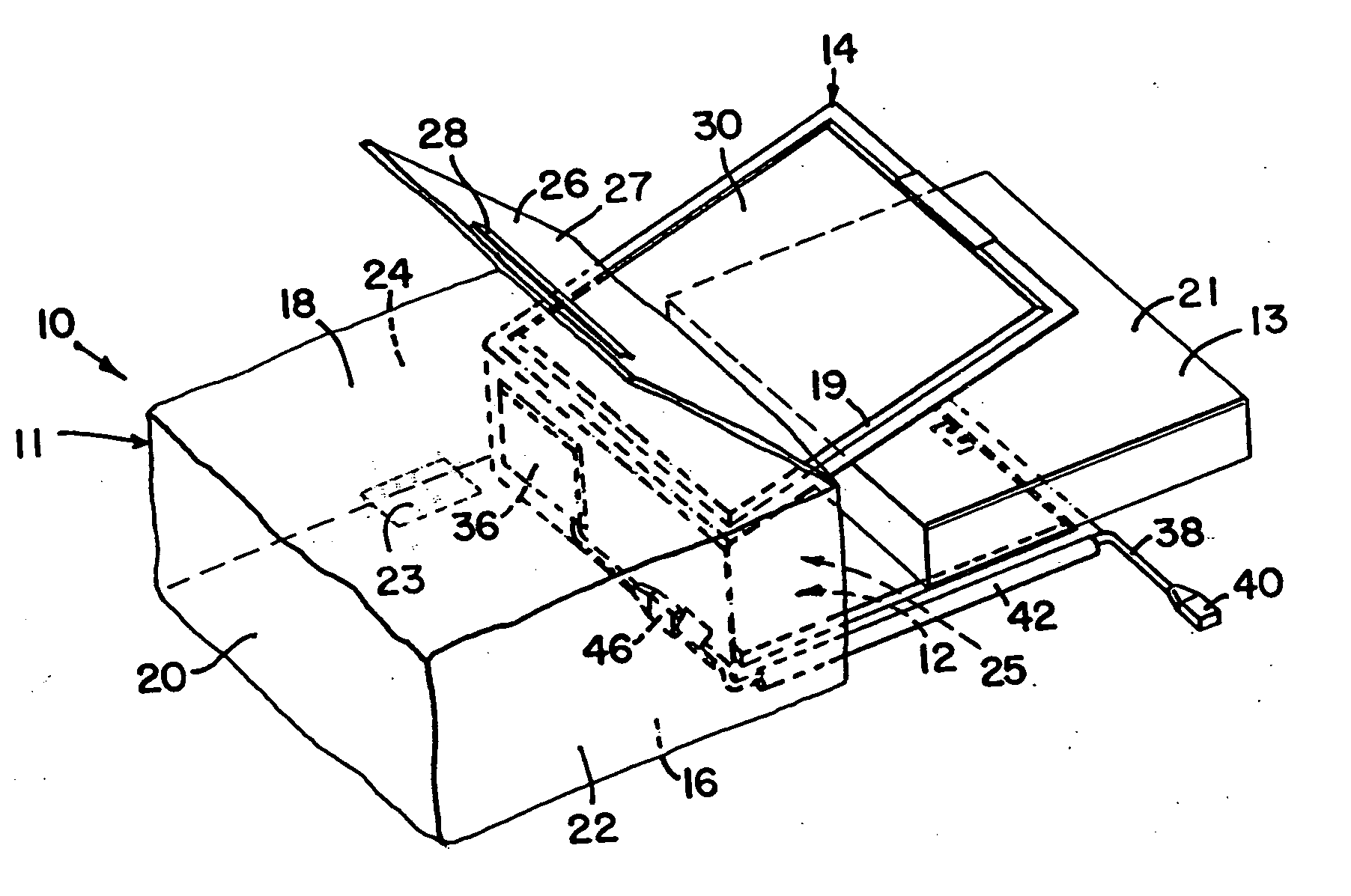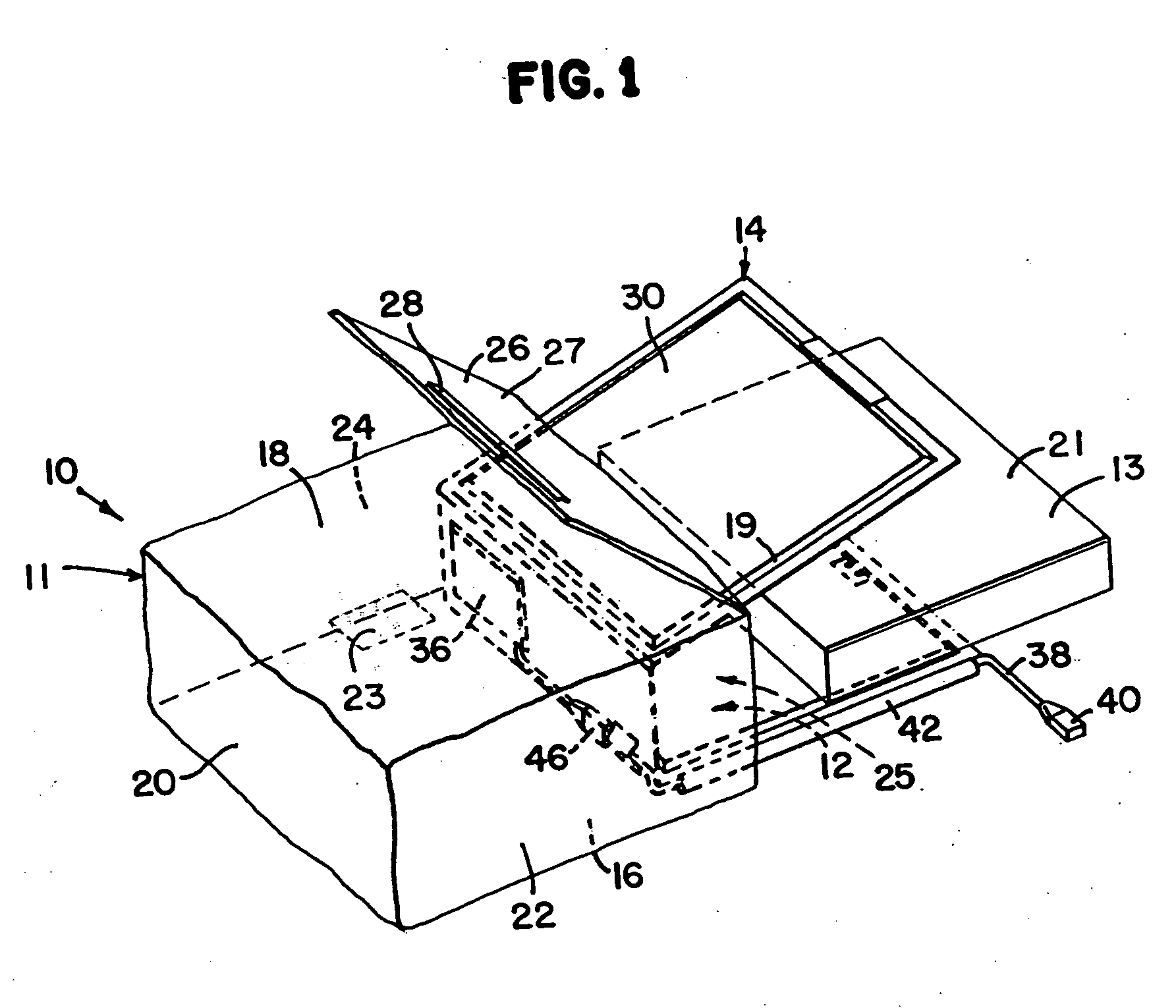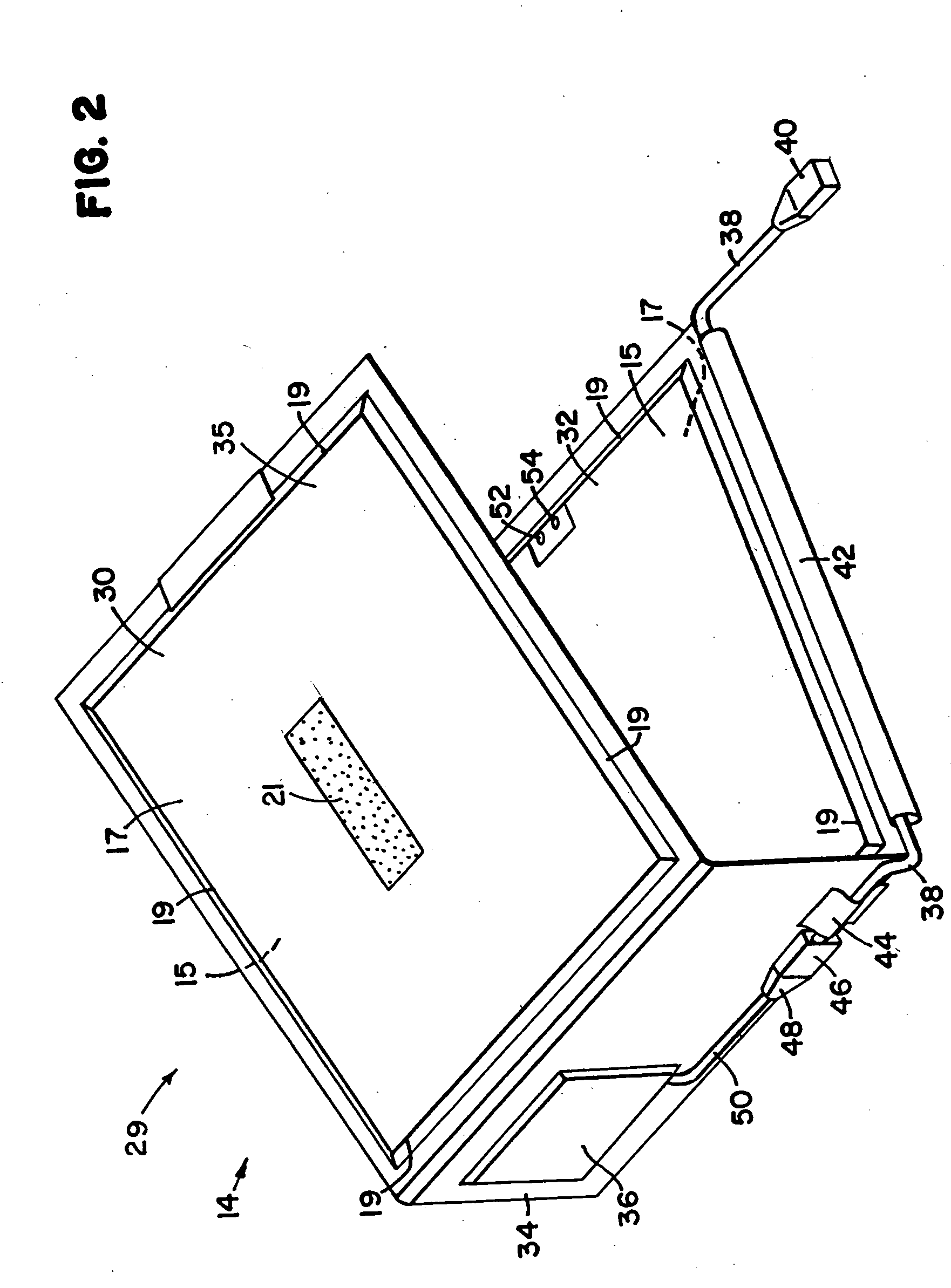Apparatus and method for heated food delivery
a technology for heating food and appliances, applied in lighting and heating equipment, ovens, ovens, etc., can solve problems such as inability to meet customer requirements, product temperature may drop, and product heat loss
- Summary
- Abstract
- Description
- Claims
- Application Information
AI Technical Summary
Benefits of technology
Problems solved by technology
Method used
Image
Examples
Embodiment Construction
[0059] With reference now to the various figures in which identical elements are identically numbered throughout, a description of the preferred embodiment of the present invention will now be provided. The present invention will be described with reference to a delivery apparatus for food products. In particular, the present invention will be described with reference to a pizza delivery bag for transporting pizzas. It is customary to place cooked pizza in individual cardboard boxes. While the invention is being described in the context of a preferred embodiment, it will be appreciated that the invention can be used in a wide variety of applications for storing and / or transporting articles where it is desired to maintain the articles at an elevated temperature relative to ambient temperature.
[0060] Now referring to FIG. 1, a container 10 having an interior area 12 is shown with a heater 14 partially inserted into the interior area 12. The container 10 can be any device having a plu...
PUM
 Login to View More
Login to View More Abstract
Description
Claims
Application Information
 Login to View More
Login to View More - R&D
- Intellectual Property
- Life Sciences
- Materials
- Tech Scout
- Unparalleled Data Quality
- Higher Quality Content
- 60% Fewer Hallucinations
Browse by: Latest US Patents, China's latest patents, Technical Efficacy Thesaurus, Application Domain, Technology Topic, Popular Technical Reports.
© 2025 PatSnap. All rights reserved.Legal|Privacy policy|Modern Slavery Act Transparency Statement|Sitemap|About US| Contact US: help@patsnap.com



